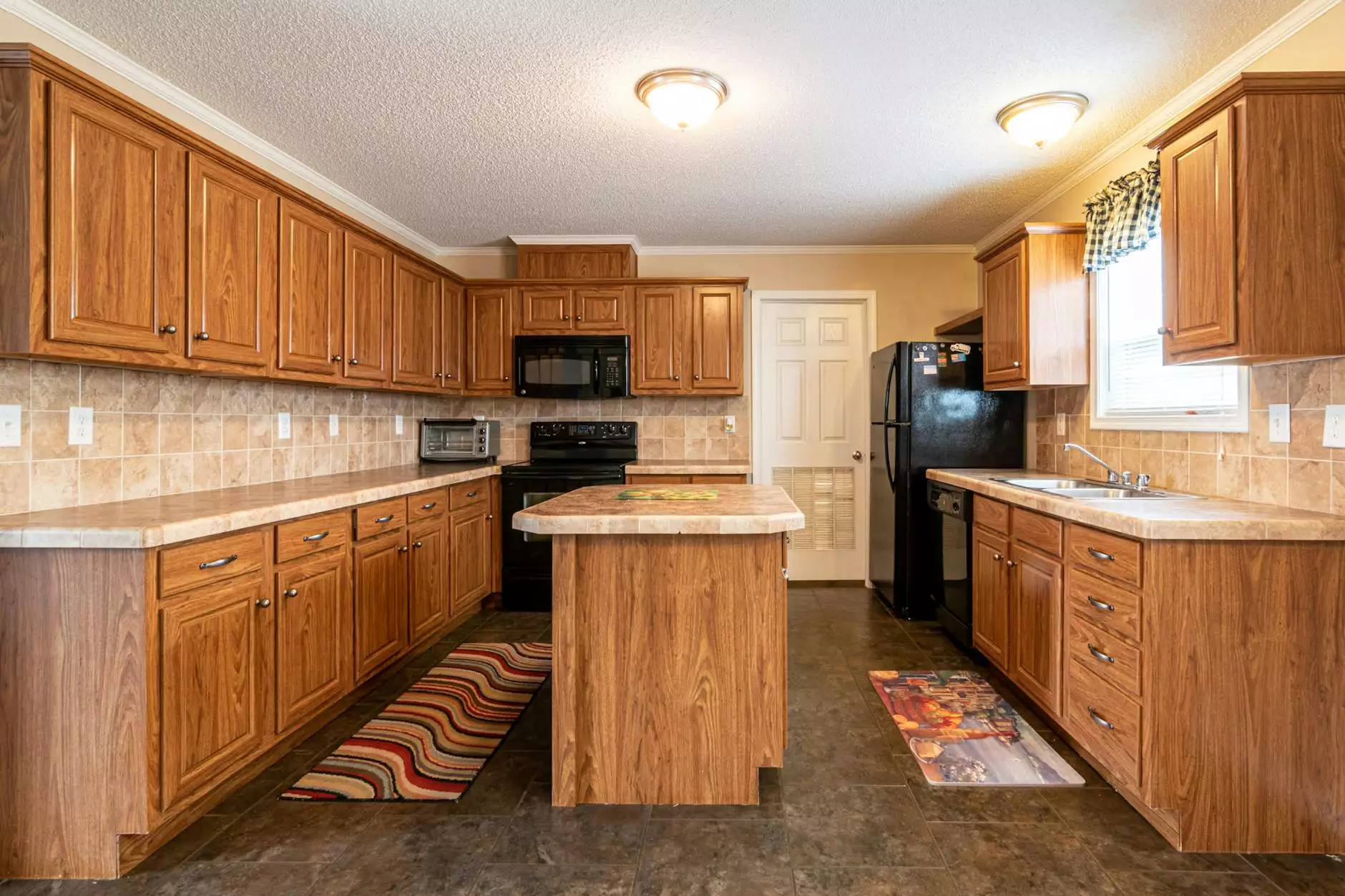Mastering Kitchen Worktop Installation: A Comprehensive Guide

Kitchen worktop installation is an essential aspect of any kitchen renovation. It not only serves as a functional element but also significantly contributes to the overall aesthetic of the space. Whether you're embarking on a full kitchen makeover or simply updating your existing countertops, understanding the nuances of worktop installation can make a world of difference. This article will delve deeply into the various materials, installation techniques, and best practices to ensure your project is a resounding success.
Understanding Kitchen Worktops
Before diving into the installation process, it's vital to understand the different types of kitchen worktops available on the market. Each material offers distinct benefits, aesthetics, and maintenance requirements. Below are some popular choices:
- Granite: A natural stone known for its durability and heat resistance. It adds a touch of luxury.
- Quartz: An engineered stone that offers uniformity in colors and patterns, along with significant durability.
- Laminate: Cost-effective and available in a range of designs, laminate can mimic more expensive materials.
- Butcher Block: Warm and inviting, this wooden worktop is excellent for food preparation but requires regular maintenance.
- Stainless Steel: Sleek and modern, stainless steel is perfect for contemporary kitchens and is resistant to heat and stains.
Preparation: The Key to Success
Successful kitchen worktop installation begins long before the actual installation. Proper preparation is crucial in ensuring a smooth process. Here are some preparatory steps you should follow:
1. Measure Accurately
The first step is to meticulously measure your existing countertops or the space where you wish to install new ones. Use a tape measure and take the following measurements:
- Length of each wall where the countertop will be installed.
- Width of the cabinets to ensure a perfect fit.
- Height for splashbacks if necessary.
- Any cut-outs needed for sinks, hobs, or outlets.
2. Choose Your Worktop Material
Once you have your measurements, select the worktop material that best suits your needs. Consider factors such as durability, aesthetic appeal, maintenance, and of course, your budget. It’s advisable to visit showrooms to see and feel the materials in person.
3. Gather Your Tools
To ensure a seamless installation experience, gather all necessary tools beforehand. Here’s a comprehensive list:
- Measuring tape
- Circular saw (or handsaw for laminate)
- Screwdriver
- Level
- Caulk and caulking gun
- Adhesive (specific to chosen material)
- Clamps
- Safety gear (goggles, gloves)
Installation Process: Step by Step
With preparation complete, you can now proceed to the actual installation. While specific steps may vary slightly depending on the material, the general process is similar.
1. Remove Old Worktops
If you're replacing existing worktops, the first task is to remove them. Begin by disconnecting any appliances like sinks or hobs. Use a screwdriver to take off any fixtures holding the worktop in place. Carefully lift off the old countertops and dispose of them responsibly.
2. Prepare the Cabinets
Before placing the new worktops, ensure your base cabinets are level and secure. You can use shims to adjust the height if necessary, as uneven cabinets can lead to an uneven worktop.
3. Cut the New Worktop to Size
Using your measurements, cut the new worktop according to the size of your cabinetry. For materials like laminate, using a fine-tooth blade will help prevent chipping. If you're dealing with tougher materials like granite or quartz, it’s often prudent to consult a professional for cutting.
4. Install the Worktops
Carefully place the cut worktop onto the cabinets. Use a level to ensure it sits flat. If working with multiple pieces, it’s crucial that the joints fit snugly together.
5. Secure the Worktop
Once positioned correctly, secure the worktop to the cabinets using screws, ensuring you drill into the cabinet frames. For certain materials like granite or quartz, adhesive will also play a key role in securing the pieces together.
6. Finishing Touches
After installing, apply caulk along the edges and joints to prevent water seepage and create a finished look. This is particularly important around sinks and hobs. Allow the caulk to dry according to the manufacturer's instructions.
Maintenance Tips for Longevity
Once your kitchen worktop installation is complete, maintaining the integrity and appearance of your countertops is crucial. Here are some tips tailored for different materials:
Granite
Granite countertops should be sealed every 1-2 years to prevent staining. Clean with a damp cloth and mild soap.
Quartz
Quartz is non-porous and easy to clean. Use warm water and mild detergent. Avoid harsh chemicals.
Laminate
Wipe with a damp cloth regularly. Avoid excessive moisture as it can warp the material.
Butcher Block
Regularly oil with a food-safe mineral oil to maintain its condition. Do not soak in water or put in the dishwasher.
Stainless Steel
Wipe with vinegar and a soft cloth to maintain shine. Avoid steel wool as it can cause scratches.
When to Seek Professional Help
While many homeowners can successfully complete a kitchen worktop installation, sometimes professional assistance is warranted. Consider hiring experts if:
- You are working with heavy materials like granite or quartz.
- Your design includes intricate cuts or joints.
- You lack the necessary tools or experience for precise work.
Conclusion
In conclusion, kitchen worktop installation is a rewarding but challenging task that can greatly enhance the beauty and functionality of your kitchen. By understanding the types of materials available, meticulously preparing for the installation process, and adhering to best practices, you can achieve results that not only meet but exceed your expectations.
For more inspiration and guidance, explore the categories on our website, kitchenmakeovers.co.uk, where we delve into kitchen renewal, kitchen makeovers, and kitchen renovations.
Remember, a well-installed worktop is not just a surface—it's the heart of your kitchen, where memories are made and family bonds are strengthened!









